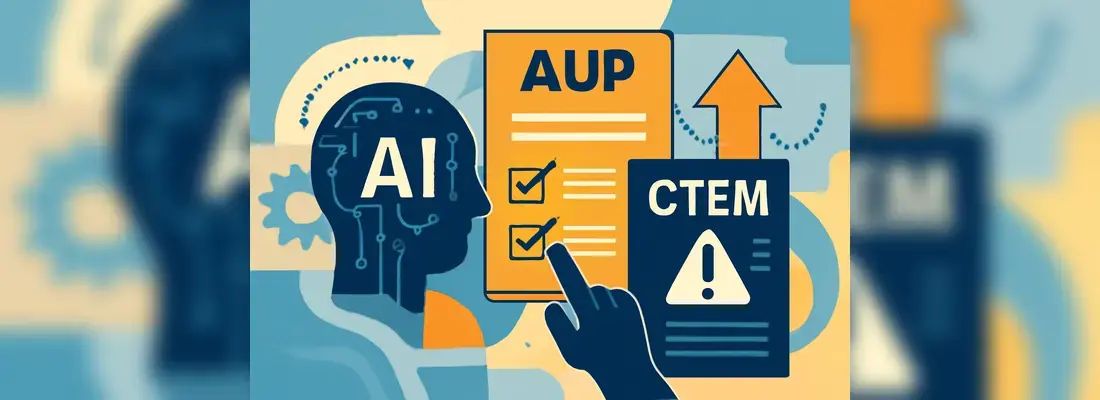Integrating NIST Cybersecurity Framework with Cyber Incident Response
Date: 1 June 2024
.jpg?width=600&name=156726032_m_normal_none%20(1).jpg)
NIST’s Cybersecurity Framework (CSF) recently received its first major update since it was first released in 2014. NIST CSF 2.0 has a larger relevance across industries and business sizes.
It also now offers a basket of resources that every business can use to improve their cyber incident response strategies. It takes into account the needs of those organisations who may have minimal or modest cybersecurity measures in place and aims to help them ease into the implementation of the NIST Cybersecurity Framework.
If you’re looking to integrate NIST’s CSF 2.0 into your organisational Incident Response strategies, this blog is for you. We explore what the major recommendations in the NIST Cybersecurity Framework are for Cyber Incident Response. We also help you figure out the best ways to ensure your own cyber resilience posture reflects NIST guidance.
Topics covered in the blog:
1. Understanding the NIST Cybersecurity Framework & Updates
2. Integrating NIST CSF 2.0 with Cyber Incident Response Plans
Understanding the NIST Cybersecurity Framework & Updates in 2024
The NIST Cybersecurity Framework is essentially a set of guidelines that organisations can implement to better manage cybersecurity risks. It encourages leveraging existing guidance and best practice recommendations to reduce and effectively communicate risk and risk management.
Note: Our NCSC Assured Training in Cyber Incident Planning & Response covers the implementation of the NIST CSF in your IR plans and processes in complete detail. Additionally, our Playbooks Training course teaches you how exactly to create NIST Compliant Cyber Incident Response Playbooks.
The NIST Cybersecurity Framework is structured around three main components: Core Functions, Implementation Tiers, and Profiles.
Core Functions of the NIST Cybersecurity Framework:
The NIST CSF 2.0 is now organised around 6 core functions:
- Govern
- Identify
- Protect
- Detect
- Respond
- Recover
Govern has been added only recently in the new NIST CSF update 2024. This function is meant to define the outcomes or expectations from the other 5 functions based on the organisational risk context. Governance is critical for incorporating cybersecurity in the overall Enterprise Risk Management strategy. This function focuses on establishing a robust cybersecurity strategy and a supply chain risk management policy.
The ‘Govern’ function ultimately determines how the organisation will implement the other 5 main steps in the NIST Incident Response Framework. Read our detailed blog on how to implement the other Steps of the NIST Incident Response process.
Implementation Tiers of NIST CSF
The CSF 2.0 breaks down the Implementation Tiers as an appendix. The tiers describe organisational profiles based on their levels of cybersecurity maturing. They reflect the organisation’s current practices of managing cybersecurity risk. In appendix B they are broken down as: Tier 1 (Partial), Tier 2 (Risk-Informed), Tier 3 (Repeatable) and Tier 4 (Adaptive).
Organisational Profiles
Organisational Profiles as described in the NIST CSF 2.0 help align your cybersecurity activities with business requirements, risk tolerances, and resources. Profiles can help you assess where you are in terms of your cyber posture versus where you need to be. You can then implement security controls more effectively to achieve your ‘target profile’.
NIST CSF 2.0 also offers ‘Community Profiles’ which address the same concerns or goals that a group of organisations may share. These organisations may typically belong to the same sector or industry. A community profile may also address a particular technology or threat type.
Integrating the NIST CSF 2.0 with Cyber Incident Response Planning
Now that you have a better understanding of the NIST Cybersecurity Framework and its desired outcomes, it’s time to move on to integrating these in your Incident Response Planning process.
Remember that the NIST Cybersecurity Framework is a tool that you can use to achieve your desired outcomes. The new CSF 2.0 also offers a basket of resources such as Quick Start Guides and the Reference Tool which organisations with even modest cybersecurity practices can use to become NIST compliant. However, how you integrate the framework into your Cyber Incident Response Planning depends on you.
This is where you might need to take help from an experienced professional. Our Virtual Cyber Assistant service is perfect for small to medium businesses who wish to improve their cybersecurity maturity over time and become compliant with the NIST Cybersecurity Framework.
Our deeply experienced cybersecurity consultants can help you map your current cybersecurity posture against NIST recommendations. They can then help you draw out an easy-to-implement yet highly effective incident response plan that will lead you to the levels of cyber resilience you’ve set out to achieve. Ultimately, it’s all about how good your cybersecurity incident response plan is and how easily it helps you bounce back after a cybersecurity event. The best part is that this service is extremely cost-effective, remote-only and offers various packages that you can choose from based on your need and budget.
Here are some other steps you can take to integrate NIST’s Cybersecurity Framework into your Incident Response Strategy:
- Incident Response Training: Staff awareness about cybersecurity risks and their individual roles and responsibilities during a cyber attack is critical to cyber resilience. As they say, the human element is the weakest link in the chain and cyber criminals love low-hanging fruit.
Our NCSC Assured Training in Cyber Incident Response Planning is a highly effective course that can dramatically improve your staff’s cybersecurity awareness. It can also help them understand how to best prepare for a cyber crisis and how to respond in the event of an attack. The most valuable input you’ll get out of it is on how to integrate the NIST Cybersecurity Framework 2.0 into your own incident response plans and documents. We also conduct specialised sessions curated specifically for the senior management and the executive.
- Simulation-based Cyber Tabletop Testing: Cyber Crisis tabletop Exercises put your team in a simulated attack situation. They are compelled to think and act like they would in an actual cybersecurity incident. This exercise is important to test the effectiveness of your cyber incident response plans and how well versed your staff is with them. These cybersecurity simulation drills also help identify weaknesses in your existing plans and strategies. You can then work with your cybersecurity consultant to improve them and integrate them better with NIST guidance.
- Continuous Monitoring & Detection: To successfully fulfil the ‘Detect’ function of the NIST CSF 2.0, you need to implement advanced monitoring and threat detection tools. You can monitor and identify suspicious activity before it becomes a major threat. This timely detection of any anomalies is critical in the current threat landscape where threats rapidly evolve into full-scale breaches.
- Managing Third-Party Risks: There is a renewed emphasis on third-party risk management in the updated NIST Cybersecurity Framework 2.0. Third-party cybersecurity risks are fast becoming a massive problem for organisations a world over. Your cybersecurity incident response strategy must have a strong and coordinated plan for managing and mitigating third-party risks. Make sure you also conduct a third-party risk assessment to evaluate if your current contracts and data sharing practices with third-party service providers are as strong and secure as they can be.
- Information Sharing: Sharing information and threat intelligence with the government, organisations in your community and regulatory authorities (where applicable) is significant. This can help your industry as a whole understand emerging threats better and develop a cohesive attack response strategy. Information sharing is also a highly effective practice to keep all organisations who may be connected in a third-party supply chain secure. Remember, you’re only as secure as your least secure third-party partner.
By integrating NIST's Cybersecurity Framework with your cyber incident response strategy, you can make a massive leap in your organisational cyber resilience. You’ll not only be better poised to detect and defend against cyber threats effectively, but you’ll be able to recover faster and get back to business as usual.
Cyber threats aren’t going to stop evolving anytime soon. The National Institute of Standards and Technology has taken cognizance of this fact and suitably updated its Cybersecurity Framework. It’s imperative that you too make the most of the refreshed guidance and integrate it into your cybersecurity incident response plans and processes.







